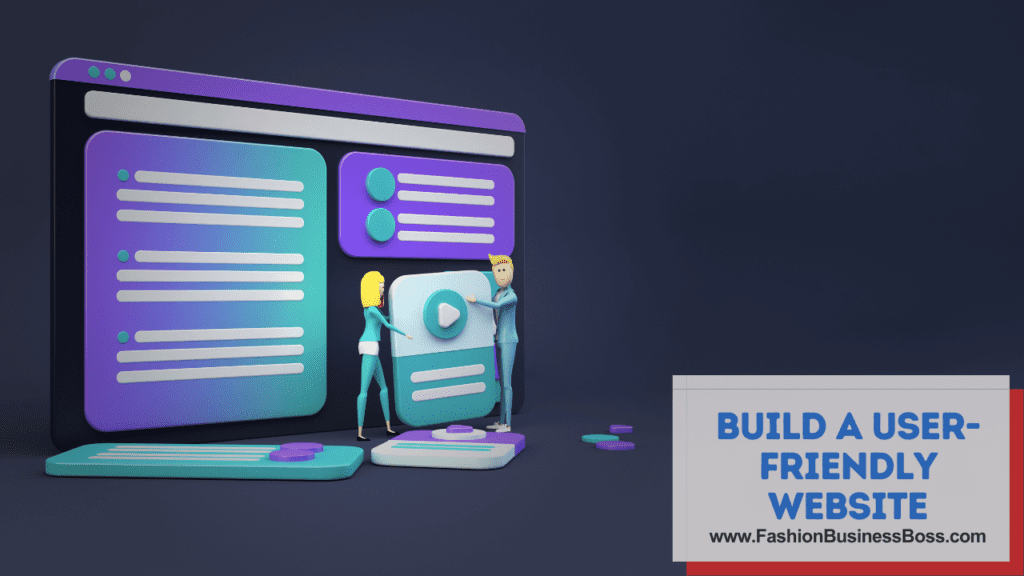In today’s digital age, starting a clothing business online offers an exciting opportunity for aspiring entrepreneurs. With the growth of e-commerce and the increasing popularity of online shopping, the global marketplace has become more accessible than ever before. However, like any business venture, success requires careful planning, research, and execution.
To start a clothing business online, conduct thorough market research, define a compelling brand identity, build a user-friendly website, and leverage social media for promotion. Focus on customer satisfaction and quality products to succeed.
1. Market Research and Niche Selection

Before venturing into the online clothing industry, conducting comprehensive market research is the foundation for success. Start by analyzing current trends and fashion preferences to identify what resonates with consumers. Understanding the target demographics is crucial – age groups, gender, geographical locations, and lifestyle preferences play significant roles in shaping your brand.
A thorough analysis of potential competitors is vital. Study their product offerings, pricing strategies, marketing techniques, and customer reviews. This evaluation helps pinpoint gaps in the market, untapped opportunities, and areas where you can stand out. Leveraging this knowledge, you can carve out a unique niche for your clothing business that caters to a specific segment of the market.
The insights gained from market research also inform decisions regarding product design, pricing, and marketing efforts. By being attuned to customer preferences and market demands, you can tailor your offerings to meet their needs, which increases the likelihood of success in a competitive e-commerce landscape.
Read more about How to Launch Your Dream Small Clothing Business
2. Define Your Brand Identity
In a crowded market, a strong and well-defined brand identity sets your clothing business apart from the rest. Your brand identity encompasses your core values, mission, and vision. Start by articulating what your business stands for and how it aims to impact the lives of your customers.
Choosing a catchy and memorable name is crucial, as it becomes the cornerstone of your brand recognition. It should align with your brand’s essence and be easily relatable to your target audience. Once you have a name, create a captivating logo that reflects your brand’s personality and values.
Consistency is key when it comes to branding. Select a cohesive color palette and design theme that resonates with your target audience, and apply them consistently across all touchpoints, including your website, social media profiles, packaging, and marketing materials.
A well-defined brand identity builds trust with consumers, fosters brand loyalty, and establishes an emotional connection with your audience. It helps customers relate to your clothing line beyond just the products you offer. Over time, a strong brand identity becomes a powerful asset that drives the growth and success of your online clothing business.
3. Create a Business Plan
A well-crafted business plan is the backbone of any successful online clothing business. It provides a clear roadmap for your venture and helps you stay focused on your objectives. Start by outlining your business’s vision and mission, defining your target market, and identifying your unique selling proposition (USP). Understanding your niche and how you intend to position your brand is essential to attract and retain customers.
Include a comprehensive marketing strategy in your business plan. This should encompass your digital marketing efforts, social media presence, email marketing campaigns, and any other promotional activities to drive traffic to your online store. Additionally, outline your sales channels, such as your website, online marketplaces, and potential brick-and-mortar collaborations if applicable.
Financial projections are a critical component of your business plan. Estimate your startup costs, operational expenses, and expected revenue. Set realistic goals and milestones that you can track regularly to gauge your progress. By defining key performance indicators (KPIs) and financial targets, you can make data-driven decisions to optimize your business’s performance and growth.
A well-thought-out business plan not only helps secure funding from investors or lenders but also provides you with a strategic framework to navigate challenges and capitalize on opportunities as your online clothing business evolves.
4. Sourcing and Inventory Management
Selecting the right suppliers and effectively managing your inventory are vital for the smooth functioning of your online clothing business. Research and vet potential suppliers to ensure they can meet your quality standards, production timelines, and cost requirements. Opt for suppliers who offer a diverse range of products to cater to your target audience’s preferences.
Inventory management is crucial to avoid common pitfalls like overstocking or running out of popular items. Utilize inventory management software to track stock levels in real-time, allowing you to reorder products as needed. Consider using dropshipping, especially in the early stages of your business, as it enables you to fulfill orders without maintaining a physical inventory.
Maintain open communication with your suppliers to ensure a smooth flow of products and address any potential issues promptly. Negotiate favorable terms and build strong relationships with your suppliers to benefit from competitive pricing and reliable delivery schedules.
By streamlining your sourcing and inventory management processes, you can provide customers with a seamless shopping experience, reduce operational costs, and stay competitive in the dynamic online clothing industry.
5. Build a User-Friendly Website

As the online face of your clothing business, your website must provide an intuitive and pleasant shopping experience for visitors. Invest in a reliable e-commerce platform that offers customization options to align with your brand’s aesthetics and functionalities. The platform should support essential features like secure payment gateways, easy navigation, and a seamless checkout process.
Optimize your website for mobile devices as a growing number of shoppers use smartphones and tablets to browse and purchase. A mobile-responsive design ensures that your website adapts to different screen sizes, providing a consistent and user-friendly experience across all devices.
Create clear and concise product categories, making it easy for customers to find what they’re looking for quickly. Implement a robust search functionality, allowing users to enter keywords and filter results based on size, color, or style.
Include high-quality product images that showcase your clothing line in the best light. Professional photography enhances the visual appeal of your products and builds trust with potential customers. Offer multiple images from various angles, and consider including lifestyle shots to help customers envision how the garments might look when worn.
A user-friendly website contributes to higher customer satisfaction, lower bounce rates, and increased conversion rates. Regularly monitor website analytics to identify areas for improvement and continually optimize your site to enhance the overall shopping experience.
Read more about Style and Substance: How to Create Your Clothing Website
6. High-Quality Product Photography
In the digital realm, compelling visuals play a significant role in capturing customers’ attention and driving sales. Invest in professional product photography that showcases the intricate details and unique features of your clothing line. High-resolution images create a sense of authenticity and build confidence in potential buyers.
Present your products in multiple images from various angles to give customers a comprehensive view. Utilize models or mannequins to display how the clothing fits and drapes on the body. Providing size charts and detailed product descriptions complements the visual experience and helps customers make informed decisions.
Zoom features are a valuable addition, allowing customers to inspect fabrics, patterns, and stitching up close. This level of detail reinforces the quality and craftsmanship of your garments.
Consistency is crucial when it comes to product photography. Use the same background and lighting for all images to maintain a cohesive and professional look. Your product images should also align with your brand’s aesthetic and values.
High-quality product photography not only boosts your online store’s credibility but also fosters a deeper emotional connection with potential customers. It enhances the overall shopping experience, reducing hesitation and encouraging customers to click that “Add to Cart” button.
7. Content Creation and SEO
Creating compelling and relevant content is a powerful tool for driving organic traffic to your online clothing business. Incorporate a dedicated blog section on your website, where you can publish fashion-related articles, style guides, trend reports, and other valuable content. This not only establishes your brand as an authority in the industry but also keeps visitors engaged and encourages repeat visits.
To maximize the reach of your content, implement Search Engine Optimization (SEO) strategies. Research relevant keywords and incorporate them naturally into your articles to improve your website’s search engine rankings. Optimize meta tags, headings, and image alt text to enhance your website’s visibility on search engine results pages (SERPs).
Stay consistent in posting fresh content regularly, and share your blog posts across your social media platforms to reach a broader audience. Engaging and informative content fosters a sense of community and encourages social sharing, expanding your brand’s online presence.
8. Social Media Marketing
Social media platforms provide an invaluable avenue for promoting your online clothing business and connecting with your target audience. Choose platforms that align with your brand image and cater to your target demographics. Instagram, Facebook, Pinterest, and TikTok are popular platforms for the fashion industry.
Create a content calendar to schedule regular posts that showcase your clothing line, highlight new arrivals, and share behind-the-scenes glimpses. Use eye-catching visuals and compelling captions to engage your audience. Encourage user-generated content by sharing customer photos and testimonials, which strengthens brand authenticity and social proof.
Engage actively with your followers by responding to comments, messages, and mentions promptly. Personal interactions help build a loyal community around your brand. Run social media contests and promotions to incentivize engagement and attract new followers.
Social media advertising is a valuable tool for reaching a wider audience beyond your existing followers. Use targeted ads to showcase your products to potential customers based on their interests, demographics, and online behavior.
9. Customer Service and Feedback

Exceptional customer service is paramount to building long-lasting relationships with your clientele. Respond promptly to customer inquiries and concerns, whether through email, social media, or live chat. Ensure that your return and exchange policies are transparent and hassle-free, enhancing customer trust and satisfaction.
Encourage customers to provide feedback and reviews after their purchases. Positive reviews serve as testimonials that attract new customers, while constructive feedback helps you identify areas for improvement. Address negative feedback with empathy and a proactive approach to resolve issues.
Use customer feedback to continuously enhance your products and services. By listening to your customers’ needs and preferences, you can make informed decisions that align with market demands, further enhancing your online clothing business’s success and reputation.
Read more about How To Best Retain Customers For Your Fashion Brand
Conclusion
Starting a clothing business online requires dedication, creativity, and a deep understanding of your target audience. By conducting thorough market research, defining a unique brand identity, and creating a user-friendly website, you can lay a strong foundation for your venture. As you navigate the exciting world of e-commerce, always keep the customer at the forefront of your decisions, continuously adapt to changing trends, and stay true to your brand’s values. With passion and persistence, your online clothing business can flourish and make a mark in the competitive fashion industry.
Frequently Asked Questions

1. Should I manufacture my own clothing or use a third-party supplier?
It depends on your budget and resources. You can manufacture in-house or use a reliable third-party supplier.
2. What e-commerce platform is best for my online store?
Popular options include Shopify, WooCommerce, and BigCommerce. Choose one that suits your needs and budget.
3. How do I create a visually appealing website for my clothing business?
Invest in professional web design, high-quality product photography, and user-friendly navigation.
To learn more about starting your own clothing business, check out my startup documents here.
Please note that the contents of this blog are for informational and entertainment purposes only and should not be construed as legal advice. Any action taken based on the information provided in this blog is solely at your own risk. Additionally, all images used in this blog are generated under the CC0 license of Creative Commons, which means they are free to use for any purpose without attribution.

Meet Shawn Chun: Entrepreneur and Fashion Business Fan.
I’m a happy individual who happens to be an entrepreneur. I have owned several types of businesses in my life from a coffee shop to an import and export business to an online review business plus a few more and now I create online resources for those interested in starting new ventures. It’s demanding work but I love it. I do it for those passionate about their business and their goals. That’s why when I meet a designer or boutique owner at a craft fair, farmers market, retail location or anywhere else I see myself. I know how hard the struggle is to retain clients, find good employees and keep the business growing all while trying to stay competitive.
That’s why I created Fashion Business Boss: I want to help fashion business owners like you build a thriving business that brings you endless joy and supports your ideal lifestyle.

